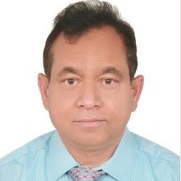Topic Editors


Drilling, Completion and Well Engineering for the Natural Energy Resources Extraction, Storage and Sustainable Management, 2nd Edition
Topic Information
Dear Colleagues,
The key to successfully meeting the growing global energy demand and achieving energy transition in sustainable, environmentally, and socially acceptable manner, lies in the processes of drilling and well completion. These processes are integral to various aspects, including oil and gas exploration and extraction, geothermal energy harnessing, gas hydrate exploration, deep mining, subsea mining, and underground storage of CO2, hydrogen, and excess renewable energy in the form of compressed air. While drilling and well completion technologies have rapidly advanced, particularly in the realm of oil and gas exploration and production, their progress in other domains such as underground hydrogen storage, geothermal energy, deep mining, and storing excess renewable energy as compressed air has been very limited. These technological advancements also, must not only deliver cost-effective and safe well construction and completion throughout a well's lifecycle but also ensure sustainable development that addresses economic, health, safety, and environmental (HSE) concerns and societal challenges.
With this perspective in mind, we are pleased to reintroduce the previously successful topic, “Drilling, Completion and Well Engineering for the Energy Resources Extraction, Storage and Sustainable Technology” within the purview of esteemed journals like Energies, Geosciences, Minerals, and Resources. We also welcome contributions related to CO2 Capture, Storage, Utilization, and Sequestration (CCUS) and Natural Resource Extraction, Natural Hydrogen Exploration and Production, Underground Hydrogen Storage.
This topic aims to encompass multidisciplinary scholarly works that delve deeply into the scientific principles and mechanisms, addressing critical economic, social, and technical challenges, and exploring innovative ideas and concepts in the broader context of Drilling, Completion, and Well Engineering for Natural Energy Resource Extraction, Storage, and Sustainable Development and Management.
Topics of interest for publication in this topic include but are not limited to:
- Drilling and completion engineering.
- Drilling Automation, artificial intelligence, machine learning within the scope of drilling, completion, well engineering deployment, along with advancements in fibre optics and sensor technology, and the concept of smart well completion.
- Drilling and completion fluids including phenomena related to multiphase fluid flow and developments in drilling fluid and cementing technology.
- Geomechanics, and earth modelling, wellbore stability; Borehole Integrity
- Material engineering, encompassing composite materials and sustainable material solutions.
- Utilising computational fluid dynamics and advanced numerical techniques, as well as advanced optimisation techniques for the analysis, prediction, interpretation, characterisation, and optimization of drilling, completion and operation processes
- Coil tubing drilling and completion;
- HSE (Health, Safety, and Environment) and sustainability aspects associated with drilling, completion, maintenance, and operations.
- Well integrity, and development of regularity framework and compliance throughout drilling, completion, and injection, operations.
- Decommission, Repurposing of existing wells, and plug and abandonment (P&A) procedures
- Process safety during drilling, including well control and considerations related to human elements.
- Advanced drilling technologies.
Dr. Mofazzal Hossain
Dr. Hisham Khaled Ben Mahmud
Dr. Md Motiur Rahman
Topic Editors
Keywords
- drilling
- completion
- materials
- drilling fluids
- cementing
- multiphase flow
- drilling hydraulics
- drilling automation
- materials
- composite materials
- sustainable materials
- sustainable energy development
- coil tubing, drilling bit technology
- automation, AI and ML in drilling and completion
- drilling and completion operations
- drilling and completion information management
Participating Journals
| Journal Name | Impact Factor | CiteScore | Launched Year | First Decision (median) | APC | |
|---|---|---|---|---|---|---|

Energies
|
3.2 | 7.3 | 2008 | 16.8 Days | CHF 2600 | Submit |

Geosciences
|
2.1 | 5.1 | 2011 | 23.6 Days | CHF 1800 | Submit |

Minerals
|
2.2 | 4.4 | 2011 | 17.7 Days | CHF 2400 | Submit |

Resources
|
3.2 | 7.2 | 2012 | 23.3 Days | CHF 1800 | Submit |

Preprints.org is a multidisciplinary platform offering a preprint service designed to facilitate the early sharing of your research. It supports and empowers your research journey from the very beginning.
MDPI Topics is collaborating with Preprints.org and has established a direct connection between MDPI journals and the platform. Authors are encouraged to take advantage of this opportunity by posting their preprints at Preprints.org prior to publication:
- Share your research immediately: disseminate your ideas prior to publication and establish priority for your work.
- Safeguard your intellectual contribution: Protect your ideas with a time-stamped preprint that serves as proof of your research timeline.
- Boost visibility and impact: Increase the reach and influence of your research by making it accessible to a global audience.
- Gain early feedback: Receive valuable input and insights from peers before submitting to a journal.
- Ensure broad indexing: Web of Science (Preprint Citation Index), Google Scholar, Crossref, SHARE, PrePubMed, Scilit and Europe PMC.


